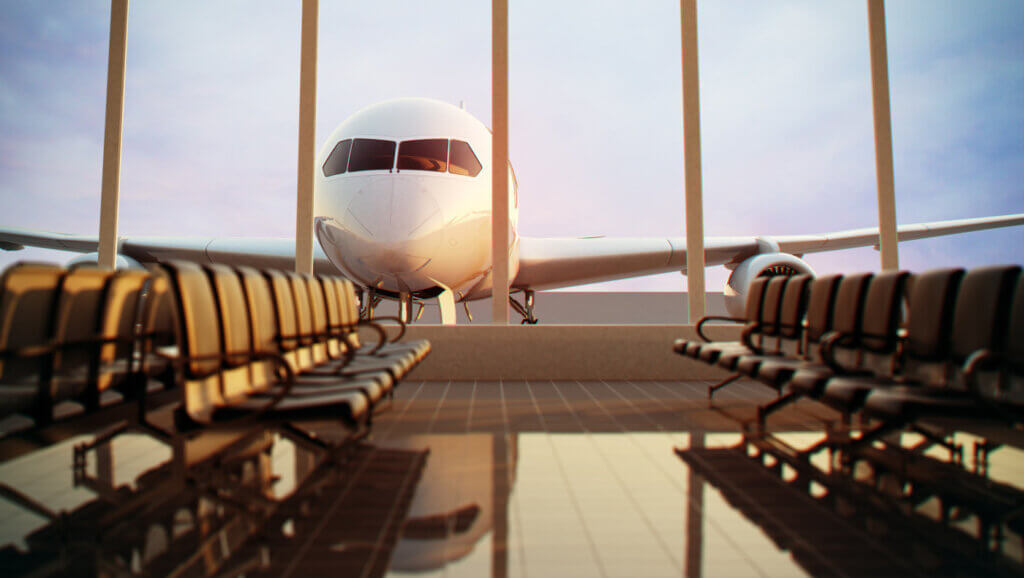
Well past the second anniversary of the pandemic, business travel has yet to recover.
NB: This is an article from STR
There have been green shoots of hope seen in increasing weekday demand across the U.S. and U.K. as well as signs of recovery in traditionally business-focused urban hotels. However, consumer sentiment suggests a full return to pre-COVID levels of business travel may never occur. If there is full recovery in terms of volume, the composition of the segment will probably look different.
Subscribe to our weekly newsletter and stay up to date
Business sentiment moving in the wrong direction
STR’s consumer research in July 2022 produced telling insights into the state of business travel across the globe. When roughly 400 global business travelers were asked to think about their likelihood to travel for business both now and when the pandemic is “over,” the results, remained in negative territory.
More than half (55%) of respondents are less likely to travel overnight for business now compared with pre-pandemic time, while a lower percentage (40%) are more likely to travel for overnight business when the pandemic ends. Net propensity to travel, which is the difference between those more and less likely to travel is -49% for business travel today and -27% for business travel post-pandemic.
Much of the travel landscape has changed with workforce dynamics (remote work and blended travel or “bleisure”), the efficiency and costs savings of video meetings, and sustainability becoming more significant considerations in the decision to travel for work. Business travel sentiment in July 2022 dropped after showing a healthy increase in May 2022. Recession fears and recent air travel delays are likely adding to further disincentive to travel.
Business travel is not going extinct
The good news is just under half of business travelers do plan to travel in the next 12 months. Consumers are traveling for business, just not at the volume the industry had grown accustom pre-pandemic. The recent drop from May to July was possibly influenced by some of the air travel disruptions experienced over the past months.
Additionally, a recently released Global Travel Association report cites global business travel coming back albeit against significant headwinds. Booking trends tracked by technology company, Tripbam, reported at the Hotel Data Conference showed corporate bookings trending up over the past couple months—although still well below 2019 levels.
What type of business travel will return?
Travel for group events (defined as an event requiring a room block of 10 or more rooms) has already made significant strides in recovery as evidenced by the rise in U.S. group demand over the last six months (relative to the matched month in 2019). June 2022 group demand was at 95% of the 2019 comparable. As most group events, historically speaking, tend to be business focused, it is an encouraging sign that this type of travel is already returning. Of course, it is important to acknowledge the shift in groups during the pandemic to those that are leisure-based (weddings, traveling youth sports, etc.).
The continued strength of group travel is further highlighted by the business travelers surveyed who were asked about the types of travel they plan to take in the future. Business travel for group gatherings was the travel type perceived most positively.
Almost two-thirds of consumers plan to travel the same or more for group gatherings, such as industry conferences (63%) or training and team building events (61%). The increase in remote workers could be influencing this need for teams to gather and may become a more significant business travel segment in the future. It is important for the hotel industry to understand potential new traveler types and respond by thinking about the needs of this business traveler. Potentially setting aside small areas for team meetings, and adapting F&B options around a “working lunch,” are possible changes that can help along with creating relationships with businesses in the area who have a large remote worker base.
The types of travel perceived less positively were individual, face-to-face interactions. Travel to meet with customers and visits to company HQs ranked after the group travel types with over half planning to travel at the same or greater levels. It was surprising to see that meeting with customers did not rank higher given industry anecdotes about sales teams eager to beat their competition in the quest to re-engage with customers. Further exploration of the data showed that for the high-frequency traveler (6+ trips annually), who is more often salespeople, meeting with customers jumped to the top in ranking.
The lowest ranked types of business travel were for individual meetings with colleagues and suppliers/vendors with around half planning this type of travel at the same or greater levels compared with pre-pandemic times. Worker adaption and use of video technology makes conducting these types of meetings an attractive alternative, which may explain why the need to travel for these types of meetings is perceived least positively currently.
The business traveler of the future presents new opportunities
While business travel’s future is unclear, there are two things we would label as certain. Business travel will not go extinct and, given that the future of work is changing, the future of travel for work is going to change as well. These changes present new openings for the industry to target the new business traveler. The pandemic has disrupted traditional behaviors. This disruption presents hotels with opportunity to engage with travelers in perhaps previously unseen ways.














